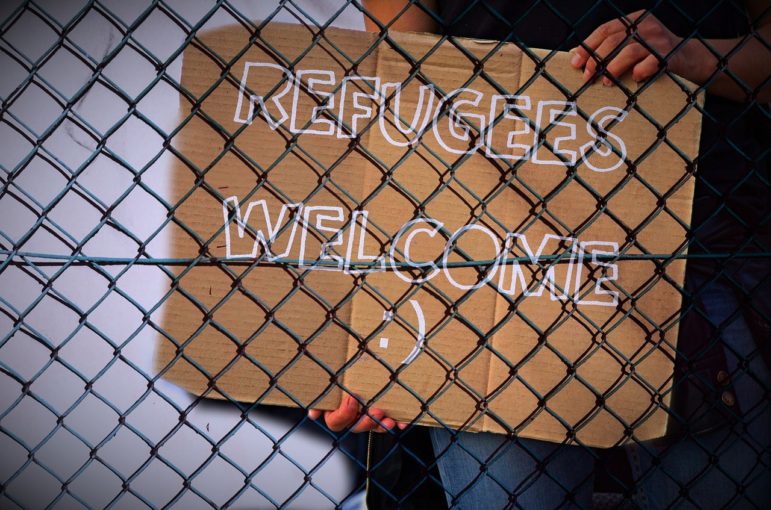
August 29, 2016; The Atlantic
The world faces a crisis of refugees and displaced people unmatched since the end of World War II, with millions of people fleeing war and violence in the Middle East and North and sub-Saharan Africa. Last September, President Obama announced that the United States would resettle 10,000 Syrian refugees within one year. Reactions from individual states to this pledge were, as NPQ correspondent Rick Cohen noted, “sad, predictable, and disappointing.”
Last fall, NPQ’s nonprofit newswire reported that fifteen governors said their states were not open to Syrian refugees, period. Both the Republican and Democratic candidates vying to replace Bobby Jindal as Louisiana governor called for a halt to Syrian refugees in that state—a truly bipartisan example of human intolerance and indecency. At the time, Cohen wrote, “This is one of those rare moments in history when a humanitarian gesture by the U.S. government has become a divisive political issue.”
The governments of some states even went so far as to threaten nonprofits. Last November, the Texas Health and Human Services Commission sent a letter to local nonprofits involved in resettlement, asking them to stop serving Syrian refugees by the end of the week. But the resettlement agencies stood their ground, backed by the federal government. In Indiana, U.S. District Judge Tanya Walton Pratt issued an injunction to Governor Mike Pence to stop him from trying to prevent the resettlement of Syrian refugees in that state by stopping the flow of federal dollars to a nonprofit, Exodus Refugee Immigration. The lawsuit claimed that Pence’s decision was constitutionally unfair to Syrians based on their country of origin. Similar lawsuits had been brought by organizations providing refugee services in Alabama and Pennsylvania.
War is still raging in Syria, now in its sixth year. On Monday, 6,500 refugees and migrants, believed to be mostly from Somalia and Eritrea, were rescued off the coast of Libya by the Italian coast guard, humanitarian organizations, and the European border control. Within 24 hours, 40 separate rescue operations were conducted by the Italian Coastguard who rescued refugees in lifejackets jumping off rubber dinghies. It was “one of the largest influxes of refugees in a single day this year.”
Sign up for our free newsletters
Subscribe to NPQ's newsletters to have our top stories delivered directly to your inbox.
By signing up, you agree to our privacy policy and terms of use, and to receive messages from NPQ and our partners.
But on that same day, a small bit of good news arrived an ocean away. The Obama administration announced that the 10,000th Syrian refugee had touched down in the United States. This goal was reached a month before its deadline—rather extraordinary, given that by the end of June the U.S. had only resettled 5,200 Syrian refugees, leaving only three months to reach the goal of 10,000, and no small feat under any political circumstance, especially given the complex, 18–24 month vetting process for all refugees that is even more stringent for those arriving from Syria.
The 20-step process for Syrian refugees entering the country includes registration, interviews, and background checks with the United Nations and the State Department; background checks and fingerprinting from the FBI, Department of Homeland Security, and the Department of Defense; and a match with an American resettlement agency. Unlike refugees from other countries, each Syrian refugee case must be reviewed by a United States Citizenship and Immigration Services refugee specialist.
In the last twelve months, the U.S. government has resettled refugees in dozens of states, with the highest number resettling in Michigan and California. Since 2012, Syrian refugees have been placed in 231 cities and towns, mostly affordable, medium-sized cities like Boise, Idaho, and Worcester, Massachusetts, with San Diego accepting more than any other American city. Most were placed in the last three months.
Over 85,000 refugees in total will have been resettled by the end of the fiscal year on September 30th, an increase of 15,000 from last year. But it is important to note that the U.S. has been much more welcoming to refugees in the past. In 1979–80, it received over 300,000 Vietnamese refugees, and during the same period took in more than 120,000 Cuban refugees during the Mariel boatlift.
“The president is gratified that we have succeeded in meeting this goal,” White House Press Secretary Josh Earnest said Monday. “We were able to do all of that without cutting any corners when it comes to security.” Earnest indicated that Obama would like to accept more Syrian refugees in the upcoming fiscal year, which starts on October 1st.—Vanessa Wu












